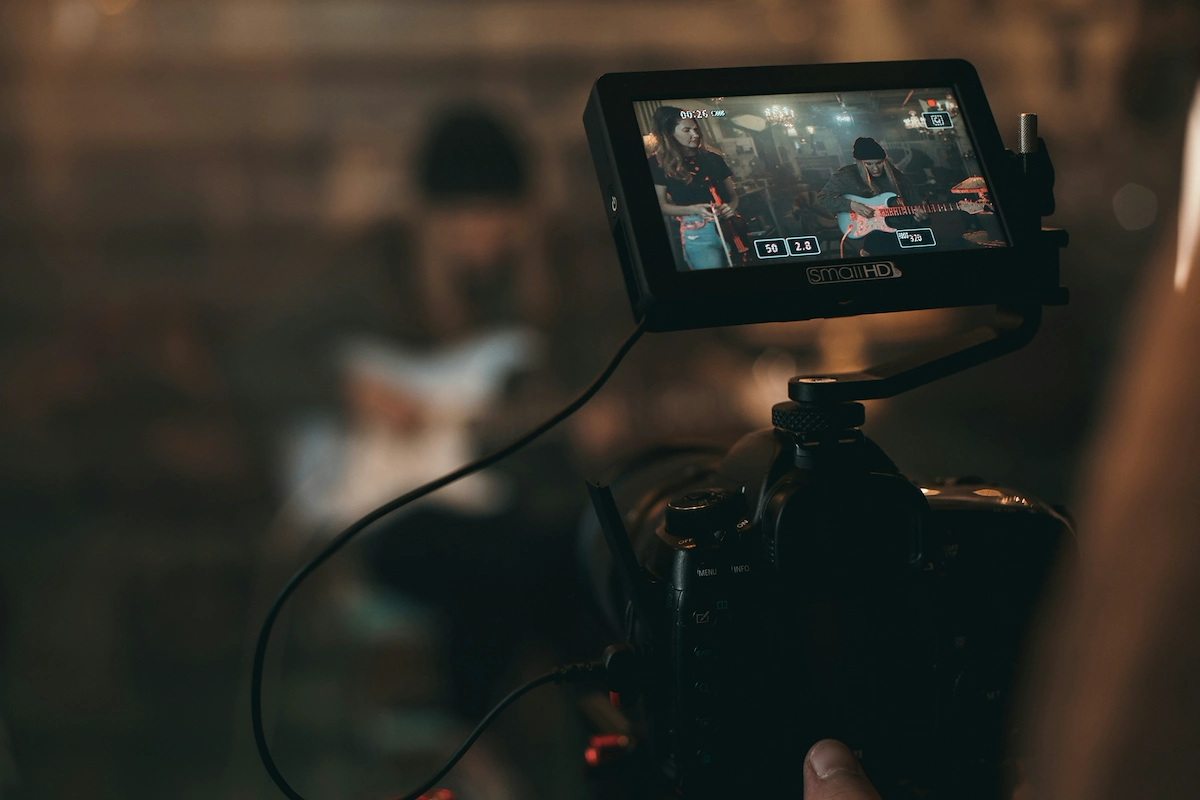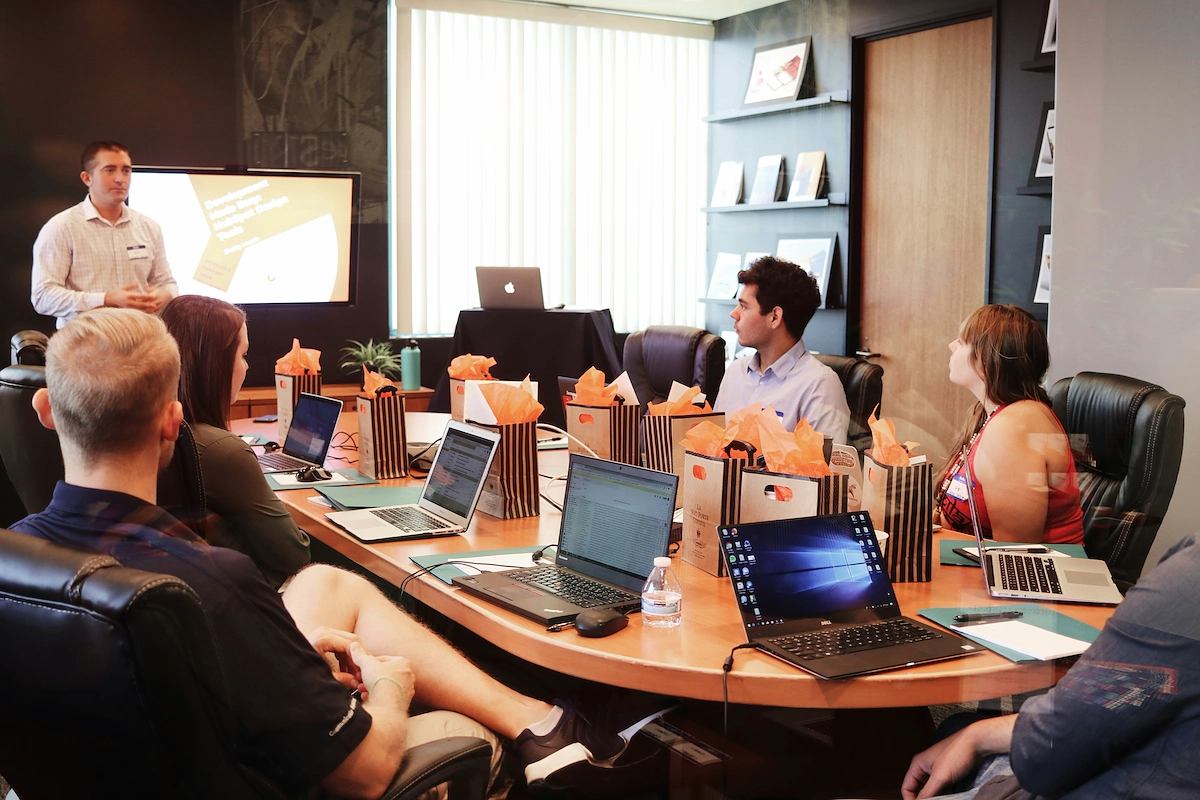Starting a merchandise business is a rewarding venture that combines creative vision with business savvy. It's a market worth billions, fueled by consistent demand for custom products from businesses building their brand, creators connecting with fans, and event organizers.
This guide will take you through the practical steps, from validating your business concept and building supplier relationships to acquiring inventory and securing the right permits, to help you launch a successful merchandise business in the U.S.
Step 1: Plan your business and validate your idea
Define your niche and research the market
A good first move is to find a specific audience. Instead of a broad category like "cool hats," narrow your focus to something like "hats for hikers." This helps you find a dedicated customer base. Many new owners pick a niche that is too general and struggle to stand out.
Use Google Trends to check the search interest for your ideas over the last 12 months. You can also browse platforms like Etsy and Pinterest to spot emerging design styles and product types that resonate with your target audience.
Analyze competitors and estimate costs
With your niche in mind, look at what top sellers are doing on Amazon Merch on Demand or Redbubble. For deeper analysis, you might use a platform like Semrush to see the keywords they target. This shows you what customers actively search for.
Speaking of costs, your initial budget will likely fall between $1,000 and $2,500. This covers LLC formation ($50-$500), design software, and an e-commerce site subscription ($50-$100 monthly). The largest portion is your first inventory order, which can be $500-$1,500 for 50-100 units.
Here are 3 immediate steps to take:
- Identify three potential niches and check their popularity on Google Trends.
- List five direct competitors from a marketplace like Etsy or Redbubble.
- Draft a startup budget with estimates for inventory, software, and legal fees.
Step 2: Set up your legal structure and get licensed
Most new merchandise businesses form a Limited Liability Company (LLC). This structure protects your personal assets if the business faces debt or lawsuits. It also offers pass-through taxation, so profits are taxed on your personal return, which simplifies filings.
A frequent misstep is to mix business and personal funds. Once your LLC is formed, open a separate business bank account immediately. This maintains your liability protection and makes tracking expenses for tax season much easier.
Next, you will need an Employer Identification Number (EIN) from the IRS. Think of it as a Social Security number for your business. You can apply for an EIN online for free, and you will receive it instantly.
At the state level, you must get a Seller's Permit, sometimes called a Resale Certificate. This allows you to buy inventory wholesale without paying sales tax. Check your state's Department of Revenue website. The permit is often free and can be issued within a few days.
Finally, check with your city or county clerk for a general business license. Costs vary by location, typically from $50 to $200 per year. Processing times can range from a single day to a few weeks, so plan accordingly.
Here are 4 immediate steps to take:
- Decide on an LLC structure and file the paperwork with your Secretary of State.
- Apply for a free Employer Identification Number (EIN) on the IRS website.
- Find and apply for a Seller's Permit through your state's tax agency.
- Contact your local city hall to inquire about business license fees and applications.
Step 3: Secure your business insurance
Your next move is to protect your business with the right insurance. General Liability Insurance is the foundation. It covers claims like property damage or customer injury. A policy with $1 million in coverage typically costs between $400 and $900 per year for a small e-commerce business.
Key insurance policies to consider
For a merchandise business, Product Liability Insurance is a high priority. It protects you if a product you sell causes harm, for example, if a shirt's dye causes an allergic reaction. Many new owners assume general liability covers this, but it often requires a separate policy or rider.
If you hold significant inventory, you should also get Commercial Property Insurance. This covers your stock against theft, fire, or damage. Coverage amounts should align with the total value of your inventory. You can get quotes from providers like Hiscox, The Hartford, or Next Insurance.
Here are 3 immediate steps to take:
- Request a quote for a general liability policy with at least $1 million in coverage.
- Ask potential insurers specifically about adding product liability coverage.
- Compare annual premiums from e-commerce friendly insurers like Hiscox or Next Insurance.
Step 4: Find a location and buy equipment
Choose your workspace
Most new merchandise businesses can operate from a home office of about 100-200 square feet. Before you begin, check your local zoning regulations for home-based businesses. Some areas have rules about inventory storage or commercial vehicle parking that you need to know.
If you decide to lease a commercial space, you might want to negotiate a shorter-term lease of one to two years. This gives you flexibility as your business grows. Landlords are often more open to this if you offer a slightly higher monthly rent.
Source your products and equipment
With your space sorted, you can get your equipment. A frequent oversight is to buy too much equipment upfront before you have consistent orders. For in-house production, you will need a few key items.
- Heat press machine: $300 - $800 for a quality starter model.
- Shipping scale and label printer: $125 - $300 for both.
- Design software: Adobe Illustrator is a standard at around $25 per month.
For blank goods, suppliers like SanMar and S&S Activewear are popular choices. SanMar has no minimum order quantity, which helps manage cash flow. This lets you test designs with small batches instead of a large, risky inventory purchase.
Here are 4 immediate steps to take:
- Check your city's website for home-based business zoning rules.
- Research starter heat press machines from brands like VEVOR or Fancierstudio.
- Create an account with a blank apparel supplier like SanMar.
- Price out shipping supplies like poly mailers and a label printer.
Step 5: Set up your payment processing
When you are ready to sell, you need a reliable way to accept payments. Most customers expect to pay with credit cards, debit cards, or digital wallets. Look for a payment processor with clear pricing and fast access to your funds.
Many new owners get surprised by transaction fees. Average commission rates from other payment solution providers can be 2.5% to 3.5% plus monthly charges. These costs reduce your profit on every single sale.
Accepting payments in person
For merchandise businesses that need to accept payments on-site or on-the-go, JIM offers a streamlined solution. With JIM, you can accept debit, credit, and digital wallets directly through your smartphone. Just tap and the sale is done.
At just 1.99% per transaction with no hidden costs or extra hardware needed, it's particularly useful for selling at craft fairs or local events. This keeps your overhead low while you test new product designs with customers.
- Get Started: Download JIM app for iOS
- Make a Sale: Type the sales amount, hit sell, and ask your customer to tap their card or device on your phone
- Access Funds: Your money is available right on your JIM card as soon as the sale is done - no waiting for bank transfers
Here are 3 immediate steps to take:
- Compare potential transaction fees from an online store processor to JIM's 1.99% rate.
- Download the JIM app for iOS to explore the interface.
- List three events or markets where you could accept in-person payments.
Step 6: Fund your business and manage finances
Secure your startup capital
An SBA Microloan is a solid option for initial funding. These loans range from $500 to $50,000 and are designed for new businesses. Expect interest rates between 8% and 13%. This capital is perfect for your first big inventory purchase or a heat press machine.
You might also look into grants. While competitive, programs like the NASE Growth Grant can provide up to $4,000 without repayment. Also check with your local Chamber of Commerce, as they often have small business grants with less competition.
Plan your working capital
Your startup loan is just the beginning. You also need working capital, which is the cash to cover operations for the first six months. A budget of $3,000 to $7,000 is a safe estimate. This covers inventory restocks, marketing, and software fees.
Many new owners focus only on the first inventory order. They run out of cash for a second batch just as sales gain momentum. Plan for at least two to three inventory cycles to avoid this cash flow gap. Using accounting software like Wave or QuickBooks Online from day one helps track every dollar.
Here are 4 immediate steps to take:
- Research SBA Microloan lenders in your state.
- Calculate your estimated working capital needs for six months.
- Find one local or national grant program and review its application requirements.
- Sign up for a free trial of an accounting software like Wave.
Step 7: Hire your team and set up operations
Define key roles and pay
You will likely handle everything yourself at first. Your first hire is often a part-time Production Assistant once you get 10-15 orders per day. This person handles printing and packing for about $15-$20 per hour. No formal certifications are needed, just attention to detail.
For design work, you might want to use freelancers from platforms like Upwork or Fiverr. You can find designers with strong portfolios for $25-$50 per hour. This avoids the cost of a full-time salary until you have a steady stream of design needs.
A mistake many owners make is hiring a full-time team too quickly. A good revenue target to aim for before you bring on a full-time employee is around $150,000 per year. This ensures your sales can support the salary.
Streamline your daily workflow
Once you have help, you need a way to manage tasks. For project management with a designer, a free platform like Trello or Asana works well. It helps you track progress on new designs without endless emails.
If you have hourly staff, you can use scheduling software to manage shifts. Apps like Homebase or When I Work have free plans that are perfect for a small team. They make it easy to communicate schedules and track hours for payroll.
Here are 4 immediate steps to take:
- Draft a job description for a part-time Production Assistant.
- Research freelance graphic designer portfolios on Upwork.
- Set a revenue goal that will trigger your first full-time hire.
- Sign up for a free project management account on Trello.
Step 8: Market your business and acquire customers
Build an audience on social media
Focus your efforts on visual platforms like Instagram and TikTok. Post short videos that show your design process or a heat press in action. This behind-the-scenes content builds a connection with potential buyers. A good initial goal for your store's conversion rate from social media is 1-2%.
You should also build an email list from day one. Offer a 10% discount code on your website in exchange for an email address. Email marketing often converts at a higher rate, around 3-5%, because you are reaching an audience that has already shown interest in your brand.
Run targeted paid ads
Once you have some organic traffic, you can experiment with paid ads on Meta. Many new owners waste money with ads that target too broadly. Start with a small budget of $15-$20 per day and focus on a lookalike audience based on your website visitors or email list.
A successful tactic is to use user-generated content (UGC) in your ads. Encourage customers to post photos with your merchandise, then ask for permission to feature them. This social proof is often more effective than professional photos, and a typical customer acquisition cost is $25-$50.
Here are 4 immediate steps to take:
- Set up an Instagram and TikTok account for your brand.
- Create a 10% discount pop-up on your website to capture emails.
- Draft a test ad campaign on Meta with a $15 daily budget.
- Reach out to one customer for permission to use their photo in your marketing.
Step 9: Price your products for profit
A good starting point is cost-plus pricing. First, calculate your cost of goods sold (COGS). If a blank t-shirt is $6 and printing adds $4, your total COGS is $10. A standard 100% markup would set your retail price at $20, which gives you a 50% profit margin.
Many new owners underprice their goods and forget to account for marketing or shipping costs. For most merchandise, a markup between 100% and 300% is a healthy range. This ensures you have enough profit to reinvest in the business.
Analyze competitor pricing
With your cost-based price in mind, look at what your competitors charge. Find five similar products on Etsy or Amazon. If their quality is comparable and they sell for $28, you might adjust your $20 price to $25. This keeps you competitive while still looking like a good value.
You can also use value-based pricing for unique items. A limited-edition design with a strong following can command a higher price. In this case, a 400% markup is possible because the customer pays for brand loyalty and scarcity, not just the physical product.
Here are 4 immediate steps to take:
- Calculate the total cost for one of your main products.
- Research prices for five similar items on a marketplace like Etsy.
- Set a starting price for your product using a 100-200% markup.
- Decide on a promotional price, like a 15% launch discount.
Step 10: Implement quality control and scale your operations
Set your quality standards
As orders increase, you need a consistent quality check process. Create a simple checklist for every item before it ships. Check for print alignment, color accuracy against your digital file, and any garment defects. A quick final review prevents most returns.
A frequent mistake is to skip this final look, which leads to customer complaints. You can also test wash a sample from each new batch of shirts. This ensures your prints hold up and do not crack or fade after one wash.
Track metrics and know when to grow
Use simple numbers to guide your decisions. Aim for a defect rate below 3% on all orders shipped. Once you consistently hit 15-20 orders per day, it is time to bring on the part-time production help you planned for. This frees you up for marketing.
When your order volume grows, manual tracking becomes difficult. Look into inventory management software like Katana to sync stock across your sales channels. This helps you avoid selling out-of-stock items. Your e-commerce platform may also have built-in tools for this.
Here are 4 immediate steps to take:
- Create a quality checklist with at least three points for final order inspection.
- Set a target defect rate of under 3% for your products.
- Define an order volume, like 15 orders per day, as the trigger for your first hire.
- Explore the inventory management features within your chosen e-commerce platform.
You now have a clear path from idea to launch. The key is to start small and test designs before a big inventory investment. This approach protects your cash flow and helps you find what sells. Your first successful product is waiting for you.
As you make those first sales, JIM helps you get paid easily. It turns your smartphone into a card reader for a flat 1.99% fee, with no extra hardware. This keeps things simple so you can focus on your customers. Download JIM.















